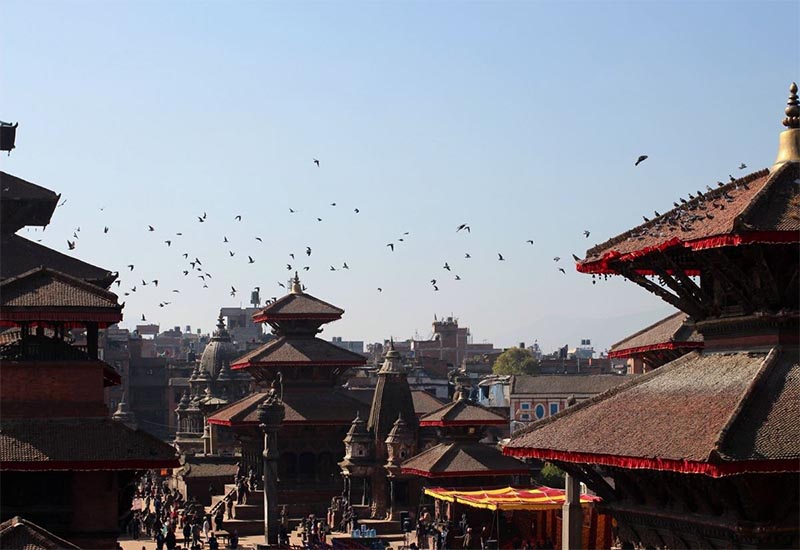
Tourism industry bounces back after earthquake
Nepal is back on the map of global tourism and the industry is meeting a positive turning point after the tragic earthquake on April 25 followed by India’s trade embargo during Nepal’s peak tourist season last year.
Nepal received 251,148 fewer tourists in 2015, representing a sharp drop of 31.78 per cent compared to the 2014 figure. The impact of the killer quake was bigger for Nepal’s tourism industry with arrivals plunging 55.59 per cent to 97,510 during the four-month period (May-August) following the disaster.
But that is behind us, say industry leaders. Trekking routes are once again crowded, according to trekking agents. International airlines are resuming their normal flight frequency best indicates the increasing tourist numbers. The streets of Thamel are bustling with tourist traffic again as hordes of adventure seekers from around the world have started to embark on trekking and mountaineering activities this spring – the second peak tourism season in Nepal after autumn.
The back-to-back disaster last year had worried workers in the industry about the prospect of Nepal’s tourism. “Things are looking better now,” says Hari Ram Baral, immediate former president of the Tourist Guide Association of Nepal. He shares, “The workers are back on their job but with caution and concern due to the volatile nature of the industry.” According to Baral, there are 3,000 trained tour guides in Nepal and several hundred untrained guides working in the industry. “It has been a difficult year for the workers. However, we see a bright future in the tourism industry despite several hiccups in the past several years, including the deadly 2015 earthquake,” added Baral.
The Tourism Employment Survey 2014 shows that every six tourists create one job in Nepal and the tourism industry provides poor communities better access to revenues generated by the tourism market. The survey shows that 1,636 trekking agencies provided 50,004 jobs, 625 tourist standard hotels provided jobs to 26,808 people, 2,112 travel agencies provided employment to 25,238 people and 105 star-rated hotels employed 13,459 persons. Likewise, the 29 international and 15 domestic airlines operating in the country employed 12,822 and 5,903 persons respectively. Similarly, 226 homestay establishments employed 2,738 people, 49 rafting companies employed 735 people and 60 paragliding and ultra-light companies employed 440 persons. The study, based on 192 tourism establishments in 10 districts, showed that 797,616 tourist arrivals in 2014 led to jobs for 138,148 persons.
The figures themselves indicate that the impact of even a small disturbance in the country could have a multiplier effect on the tourism industry, particularly in the poor community that is heavily dependent on tourist expenditure. Hence, the Rough Guides encourages tourists to visit Nepal by claiming, “Thoughtfully spent tourist dollars will go a long way here. Choosing independent homestays and grassroots tour companies ensures money ends up in local pockets.”
Trekking Draws
Nepal is aptly known as a ‘trekkers’ paradise’ for the adventure traveller on the world map. The impact of the killer earthquake was not as visible on world-class trekking routes like Annapurna and Everest.
To assure foreign visitors of the safety of such routes, the government conducted a safety audit of these popular trails. Nearly 200,000 foreign trekkers visit Nepal annually with the Annapurna region receiving 110,000 foreign trekkers annually followed by the Everest region which attracts a daring 35,000.
“Besides the Langtang Valley and Manaslu treks, the earthquake did not damage any other trekking routes,” says Ganga Sagar Pant, chief executive officer of the Trekking Agencies Association of Nepal (Taan). He further adds, “We have completed the reconstruction of Manaslu trekking routes except for some bridges that cost lots of money, and have started the process of reconstructing damaged routes in Langtang Valley.”
The entire Langtang Valley was swept away by an avalanche triggered by the earthquake. However, reconstruction works have ensued accordingly and tourists are gradually heading back to the Langtang region. Currently, around 10 tourists including domestic ones, visit Langtang daily. In 2014, 12,552 tourists visited the Langtang National Park.
Pant said that the trekker numbers in the country have rebounded dramatically. “The numbers are rising. We expect them to be good this year based on the enthusiasm of visitors and trekkers, and expect them to rise even higher to a record level in the coming year.”




Thanks a lot for sharing this perfect article.I really, really appreciate your time and efforts for writing such a quality article.